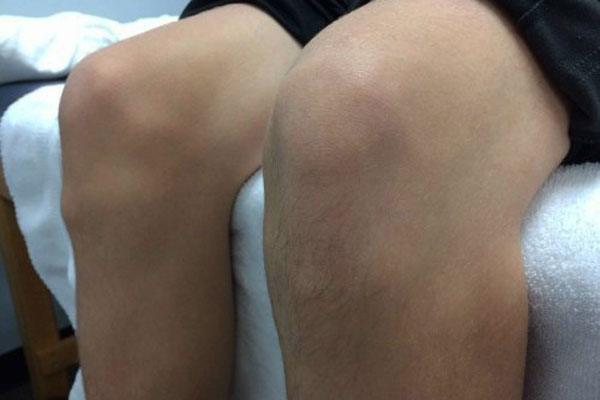Osgood Schlatter Disease
Osgood-Schlatter disease (OSD) is a very common ailment in young adolescents. It is an inflammation of the area below the knee, at the place where the patellar tendon attaches to the shinbone (tibia). Children who are in their growing-up stage and actively involved in sports like jumping and running are at a higher risk of developing this condition.
How is OSD caused?
The bones of children and adolescents possess a special area where they grow called the growth plate. The growth plates are made of cartilage and are located at the ends of the bones. These areas are more prone to injuries. A bony bump called the tibial tubercle is present at the end of the tibia, covering the growth plate. A group of muscles called the quadriceps, present in the front of the thigh, attaches to the tibial tubercle.
Certain activities like bending and squatting cause changes in the level of stress as the quadriceps muscles pull on the patellar tendon, which in turn pulls on the tibial tubercle. This can cause swelling and pain just below the kneecap.
Osgood-Schlatter disease typically occurs in boys in the age group of 12 to 14 years and in girls aged 10 to 13 years. This difference can be attributed to the fact that girls reach puberty earlier than boys. This condition normally wears off as the person grows up. This disease usually develops in one knee. Both knees may occasionally be impacted.

What are the symptoms of Osgood Schlatter Disease?
The symptoms of Osgood Schlatter disease are given below:
- Swelling just below the knee
- Pain, which increases during activities like running and squatting
- Feelings of increased warmth over the knees
Limping may also occur after engaging in rigorous activities. Sometimes, the pain disappears on its own with proper rest. It is advisable to see the doctor if this condition hampers your child's daily activities. In rare cases, this condition is known to cause the growth plate to move away from the shinbone.
What are the risk factors of Osgood Schlatter Disease?
There are several known risk factors of Osgood Schlatter disease:
- Age: This condition is seen in boys of the age group of 12 to 14 years and in the girls between 10 to 13 years.
- Sex: Boys experience it more frequently than girls do.
- Sports: This disease is common in children who are actively involved in sports like running and jumping.
- Flexibility: If the quadriceps muscles lose their flexibility, a pull is created in the patellar tendon, leading to this condition.
How is Osgood Schlatter Disease diagnosed?
A physical examination by the doctor involves checking the knee area for tenderness, redness, swelling, and an increase in pain. A bone X-ray can reveal the detailed condition of the knee and leg. It may show a prominent and elevated tibial tubercle with anterior soft-tissue swelling.
What are treatment options for Osgood Schlatter Disease?
Generally, this disease resolves on its own with time, once the child's bones stop growing. The various treatment options available are given below:
- Pain relief: Over-the-counter pain relievers can be administered to lessen the pain. Ibuprofen and naproxen are some common drug names that can be administered.
- Physical therapy: A physical therapist can teach your child certain exercises to lessen the tension on the patella tendon. Strengthening exercises go a long way toward stabilizing the knee joint. Stretches for the front and back of the thigh, including the quadriceps muscles, help to relieve pain and prevent the occurrence of the disease.
- Surgery: It is opted for in case the pain persists or if the bony overgrowth has to be removed.
-
Lifestyle changes: Some lifestyle changes can be incorporated to relieve this condition. Some of them are given below:
- Taking adequate rest and not engaging in rigorous activities helps to improve this condition.
- Pain and swelling are lessened by applying ice to the injured region
- Stretching the leg muscles with proper exercises is equally important.
- Wearing a pad over the affected area will prevent further damage.
- Using a patellar tendon strap during physical activities can help take away the force from the shinbone.
- Switching over to lighter exercises like swimming and cycling until the symptoms improve will help with a faster recovery.
What are the preventive measures for Osgood Schlatter Disease?
Some preventive steps can be taken to safeguard your child against Osgood-Schlatter disease. Lower-extremity inflexibility commonly occurs during growth spurts in adolescents. To avoid this, regular stretching exercises should be done that cover the front and back of the thigh. The child should be encouraged to switch over to such sports as swimming and cycling, which aren’t taxing on the knees. Prior to participating in sports, stretching exercises should be performed.
